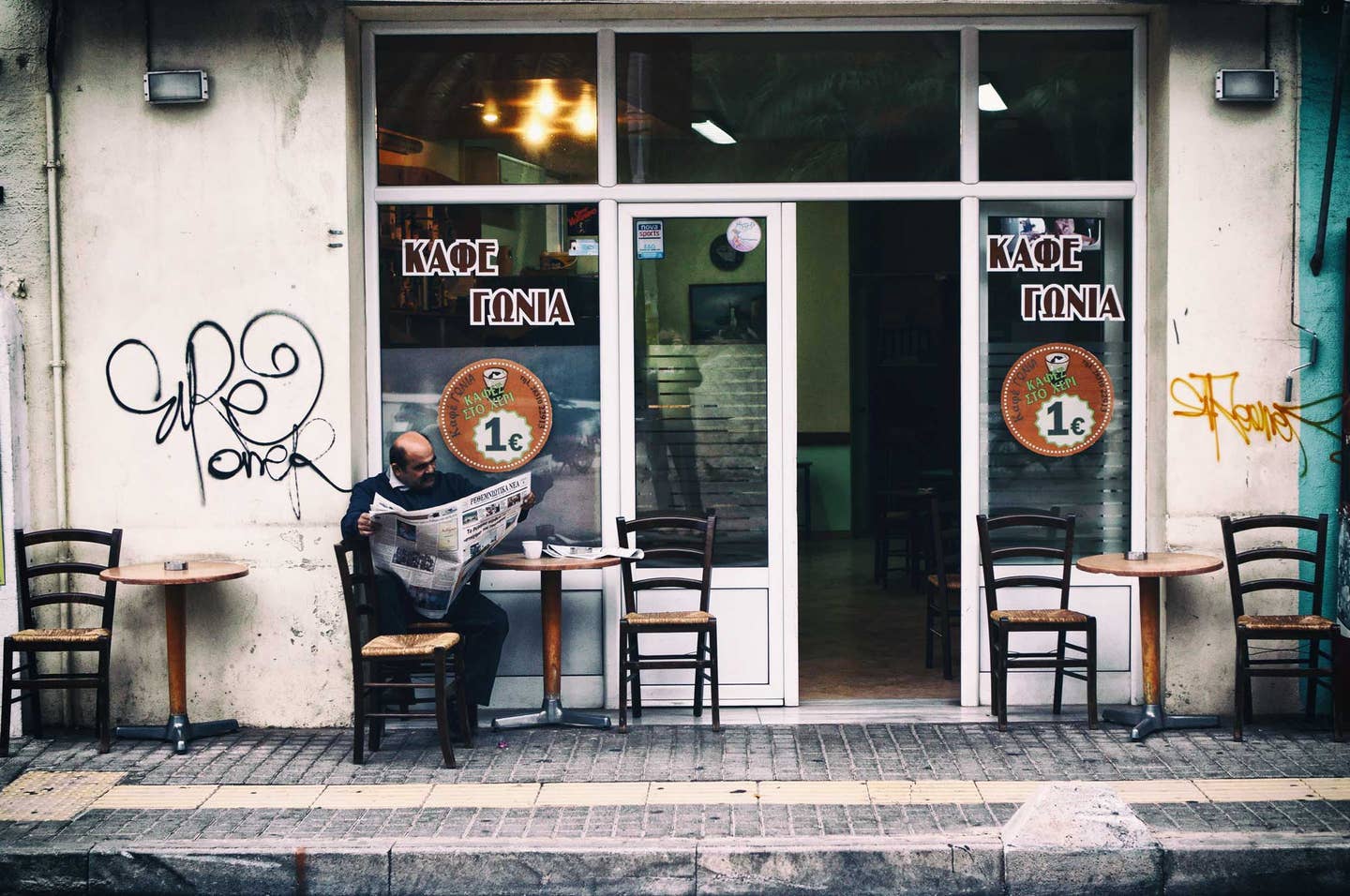
A Beginner’s Guide to Loving Greek Coffee
In Greece, going out for coffee can be a day-long event; here’s how the locals do it
When I lived in Thessaloniki, I gained an immediate familiarity with two vocabularies. The first was the swear words; I've been to enough soccer games now that I can hurl obscenities like the saltiest malaka. Then there was my coffee order: Ena cappuccino freddo sketo, parakalo. Just like Kitchen Spanish will get you through most restaurant shifts, learning Coffee Greek is critical to navigating a Thessaloniki morning.
The freddo (cold) cappuccino was my jam. I'd order at least one a day, sometimes two when I spent the afternoon downtown. In Thessaloniki, I didn’t have a favorite coffee spot, instead bouncing from place to place, sampling as much coffee as I could.
Conveniently for my coffee habit, Greeks also love their caffeine. Going out for a coffee can turn into a day-long event, shifting to wine after the sun sets and then maybe some more coffee after. And that coffee comes in many forms.
Overseas, "Greek coffee" tends to mean a single thing: a small shot of bracingly strong, sludgy-bottomed coffee you drink neat or with sugar. But Greek cafes sell a wide variety of coffee drinks, all worth trying. Here's a guide to help you order for your own day-long coffee date.
Greek Coffee
Greek Coffee
This is the most traditional, and perhaps most contentious, type of coffee in Greece. It's pretty much the same thing as Turkish coffee, but after Turkey invaded Cyprus in 1974, Greek nationalism and anti-Turkish sentiment prompted a name change. By the 1980s, Greek food scholar Albert Arouh (also known as Epicurus) notes that it was no longer "politically correct" to order a Turkish coffee in Greece, and in the 1990s, with a boost from TV commercials, it became "Greek coffee."
If it’s your first time drinking Greek coffee, make sure to remember a few things. First, it comes in a mini cup, but you should sip it, not shoot it. And second, the coffee will have some sandy grounds at the bottom. You should stop drinking when you reach that point, unless you want to chew on the rest of it.
Another good reason to leave the grounds? According to one of my friends, some people can read their futures in the remnants of their coffees, but only on Wednesdays and Fridays (for reasons that are unclear but possibly related to Orthodox tradition).
Frappe
Frappe
The frappe became the Greek drink of choice in the '60s and '70s, and you can still order it just about anywhere today. You make it by combining water, instant coffee, and possibly some sugar, then either shaking it by hand or using a magical little machine to whip it up for you. You'll end up with a fluffy froth on the top, so it's a good idea to enjoy your frappe through a straw. Drop in a few ice cubes and you've got the perfect summer coffee drink.
Freddo Cappuccino and Freddo Espresso
Freddo cappuccino
The freddo cappuccino and freddo espresso are the newest introductions to the Greek coffee lineup. Espresso and cappuccino both came from Italy in the '90s, and you can find those hot versions almost anywhere, made just about the same way as you can find in an Italian cafe. But if you go to Italy and ask for a "freddo cappuccino," you're going to get some weird looks. Freddo is the Italian word for cold, but that combination of words doesn't equal a drink in Italy.
I finally asked one of my friends, food blogger Kostas Feidantsis, about the freddo drinks. He told me that they “Greek-alized” both of them by giving them the frappe treatment—adding a few ice cubes. Other than that, they are just espresso shots whipped the same way as the frappe, and the cappuccino has a pillow of frothy milk on the top.
Keep Reading
Continue to Next Story










